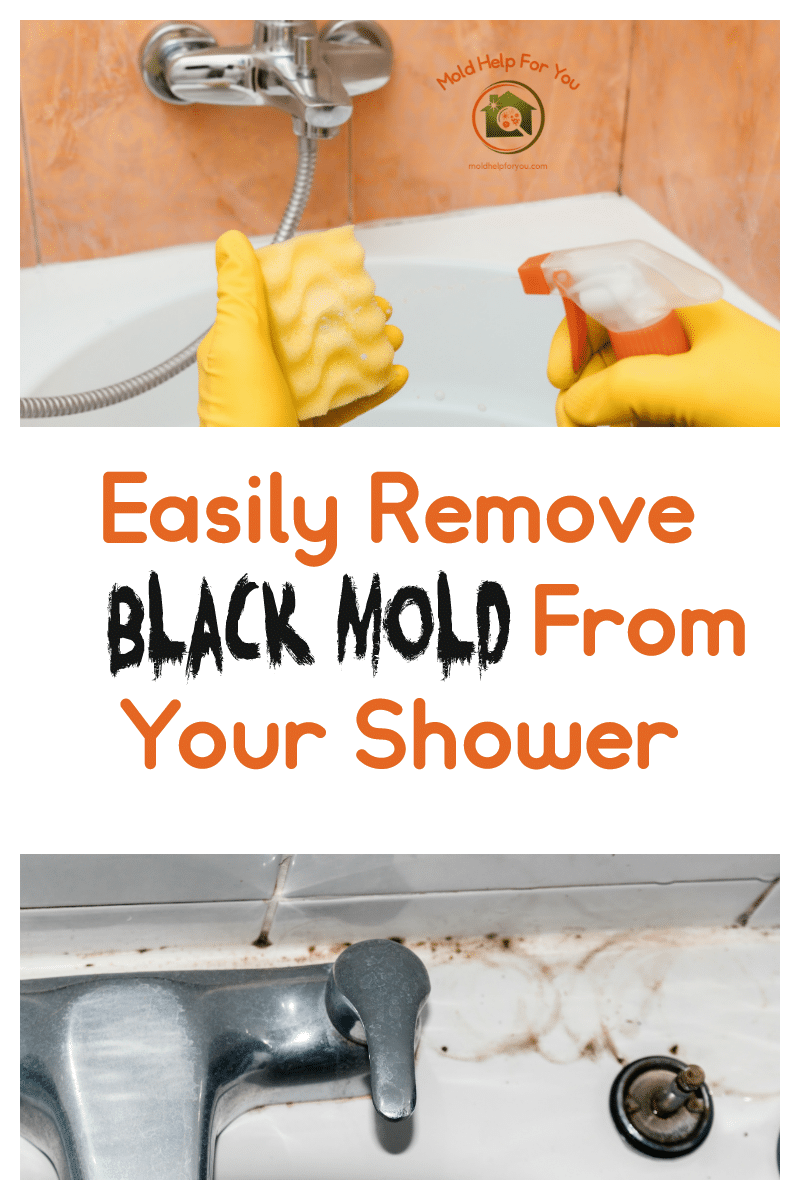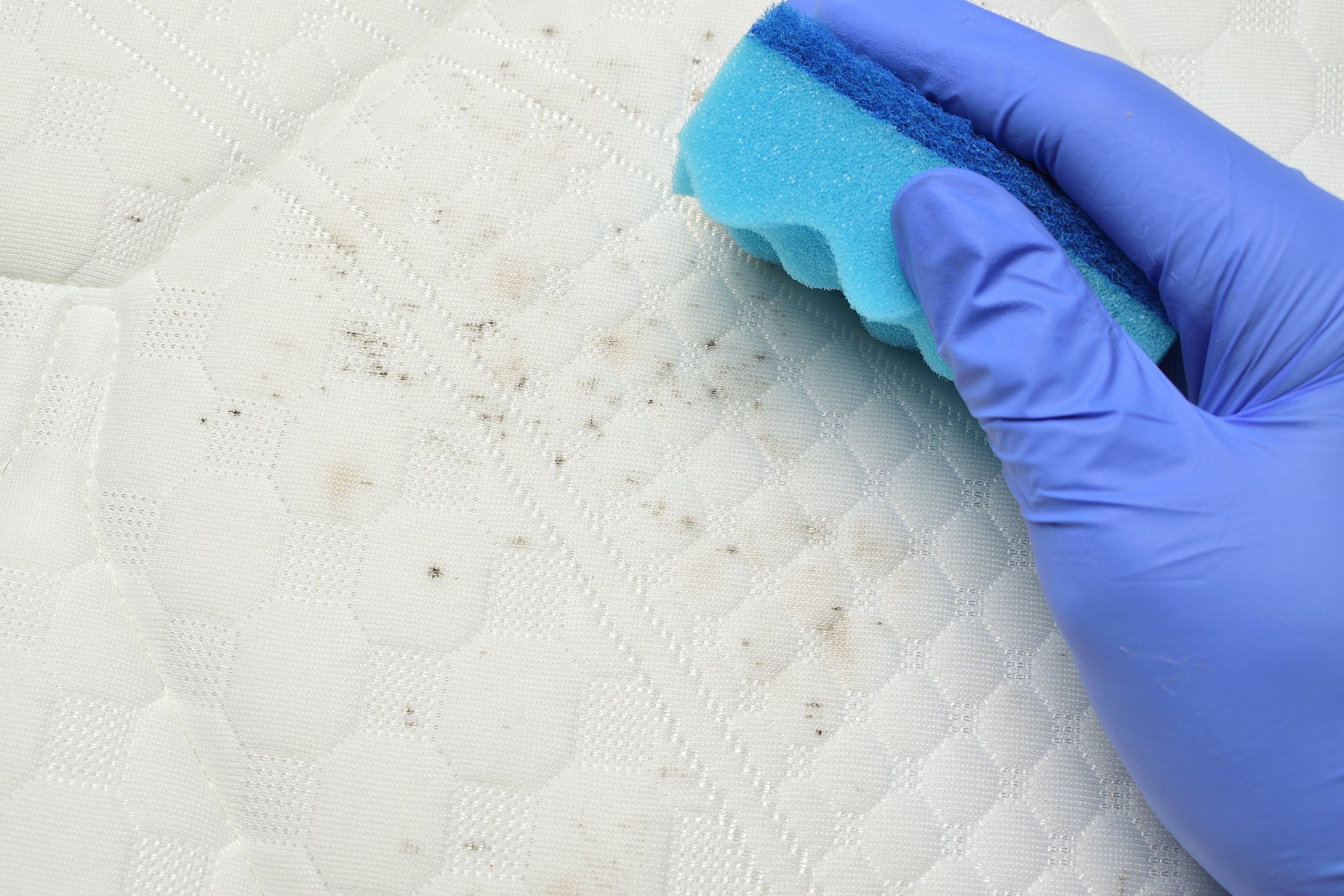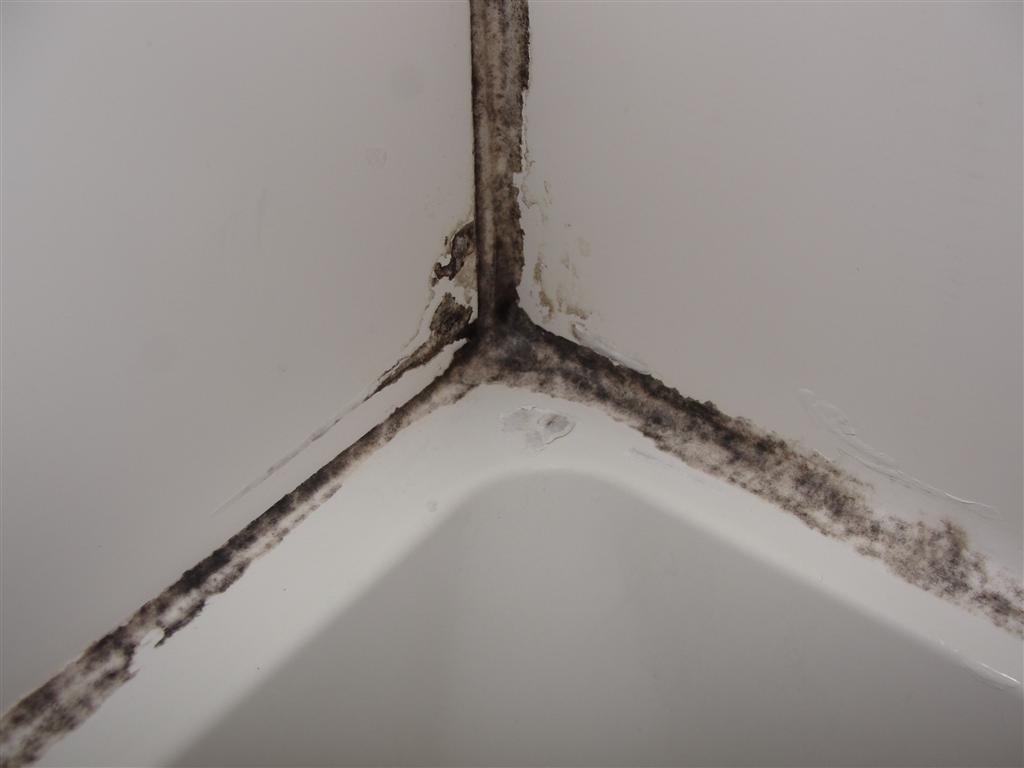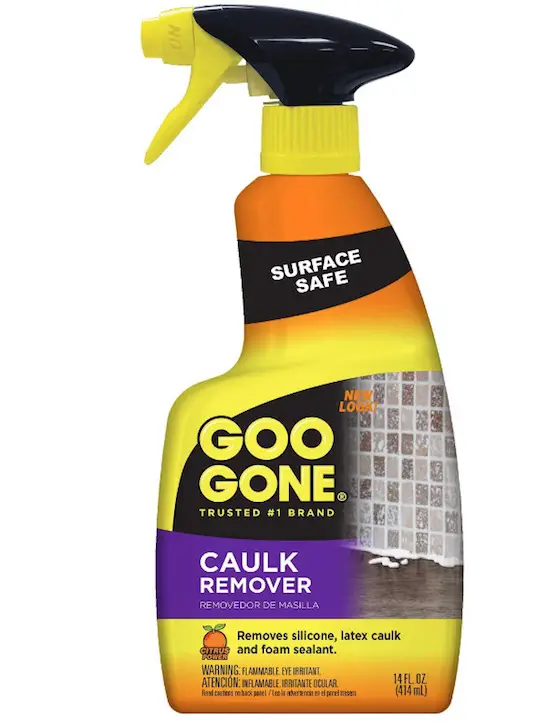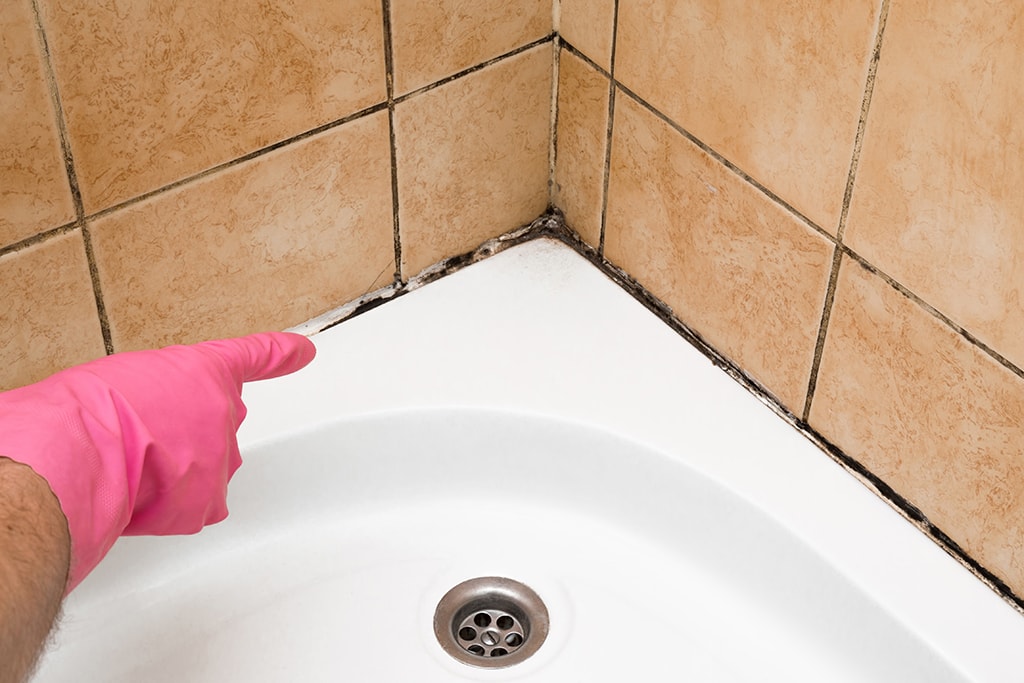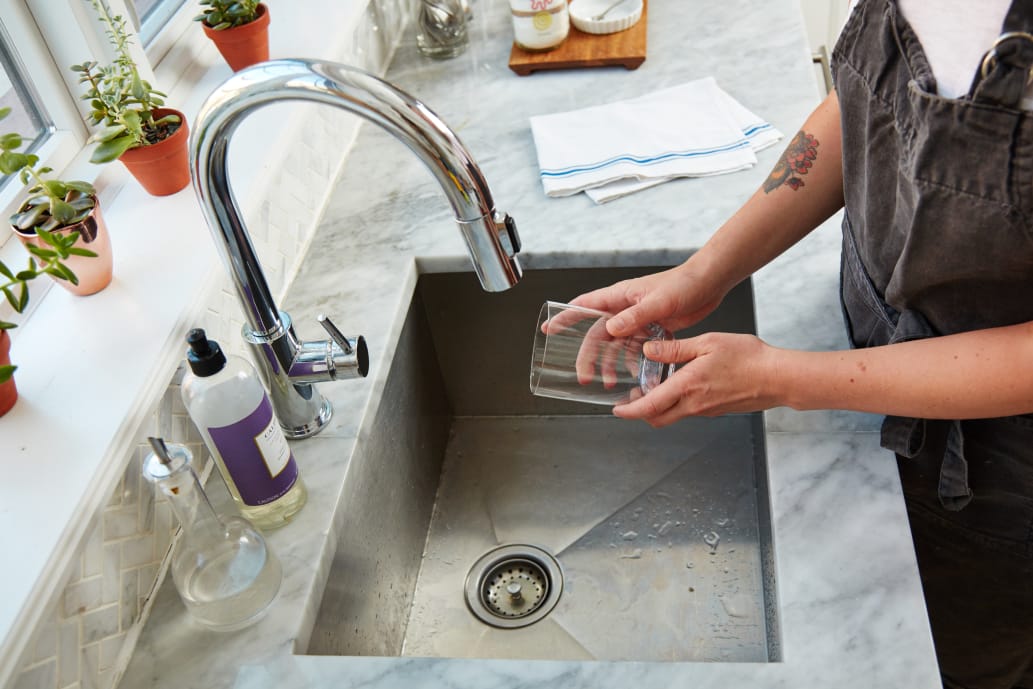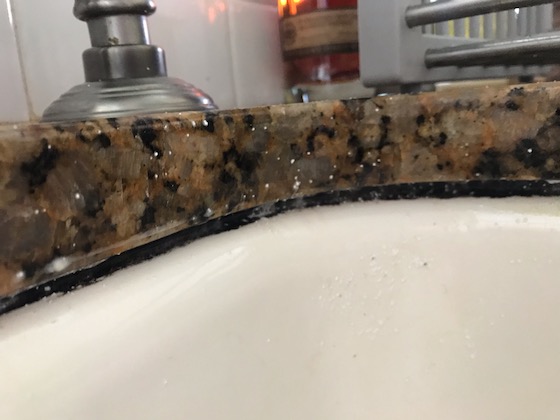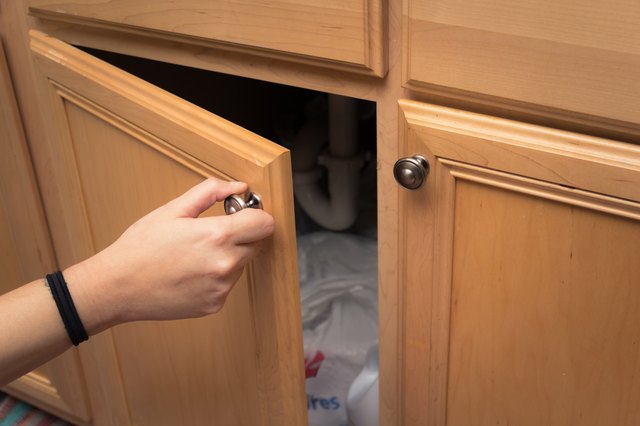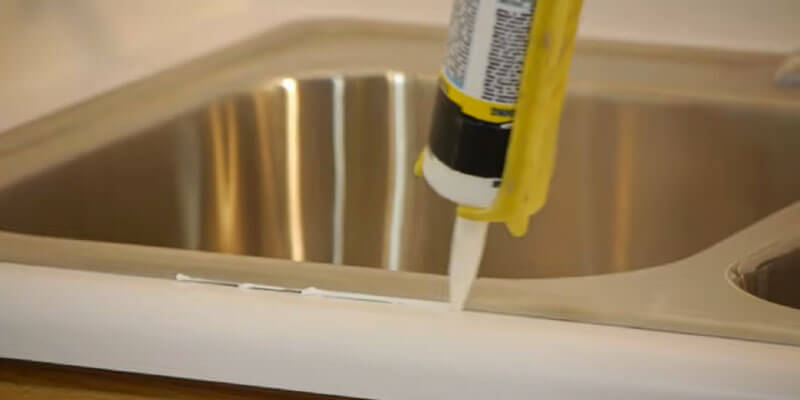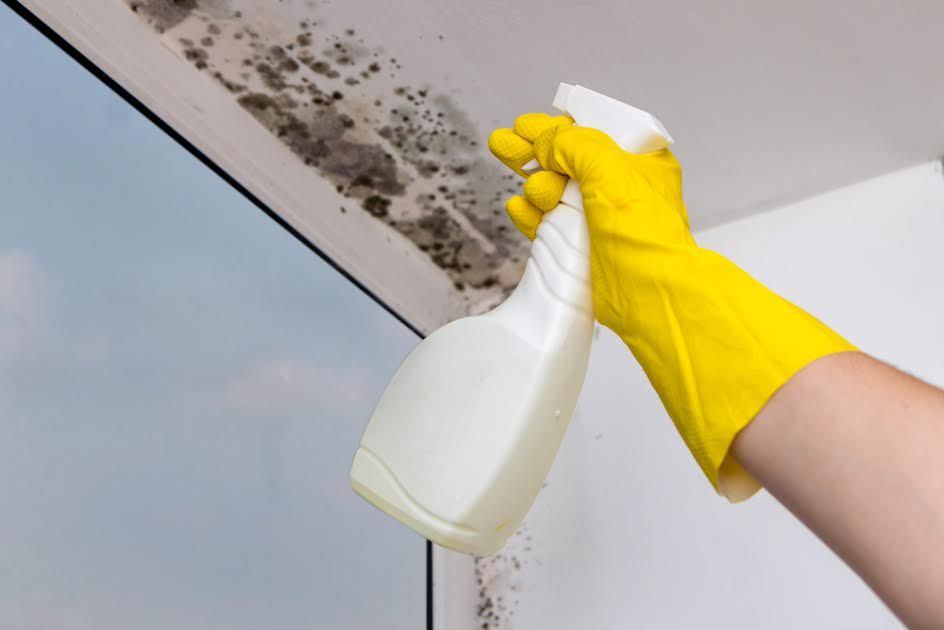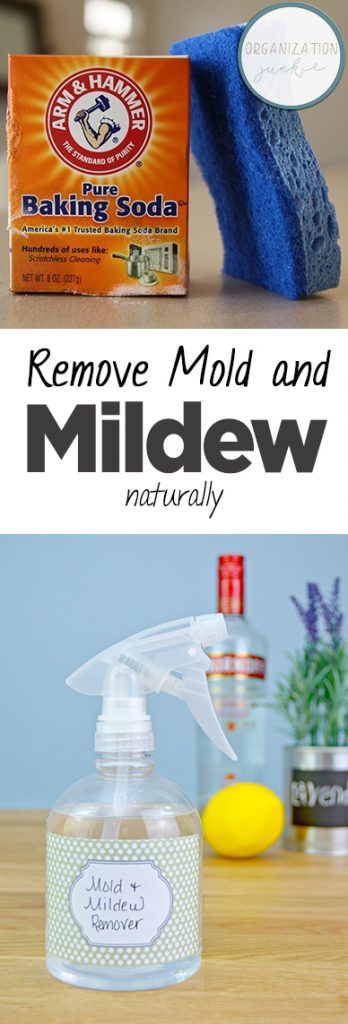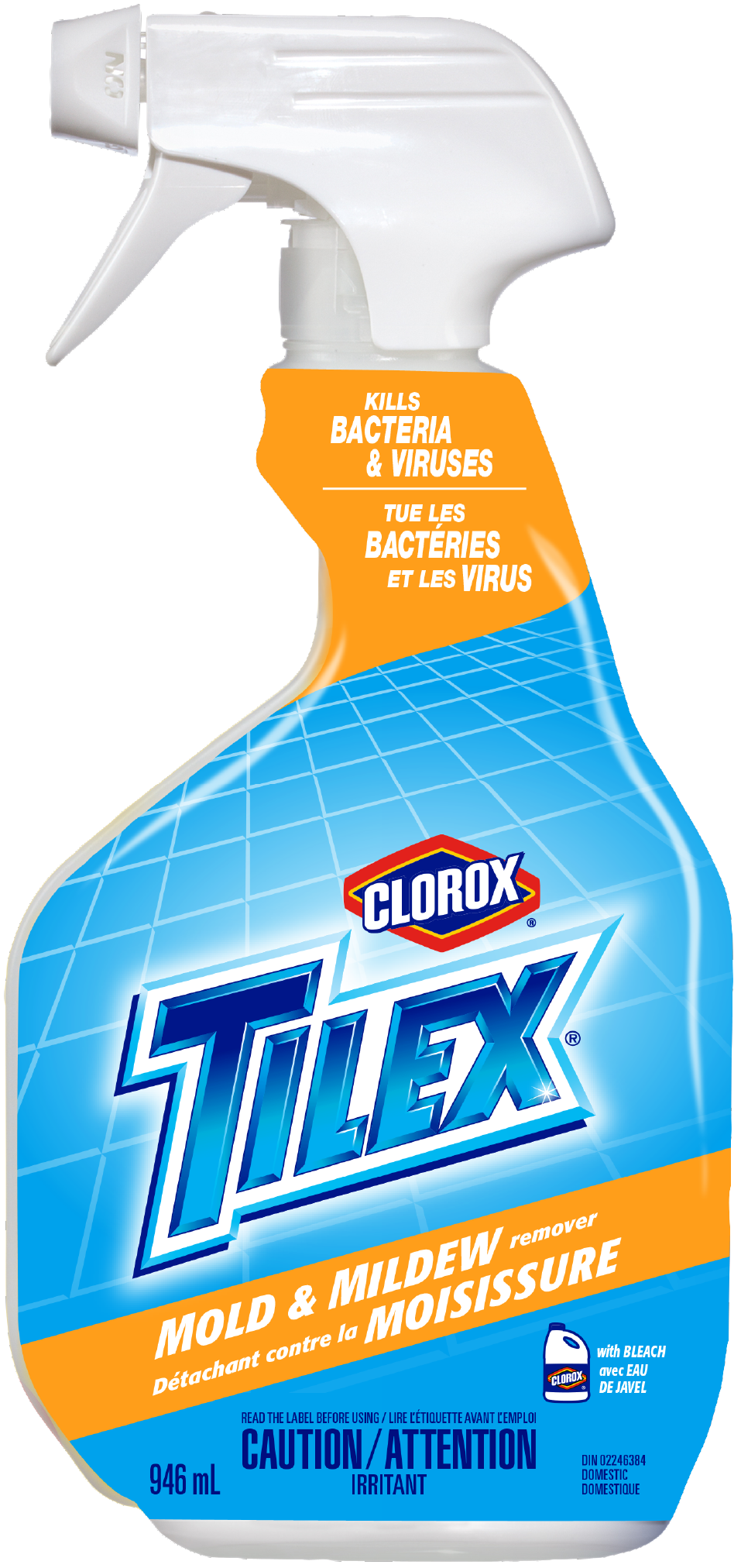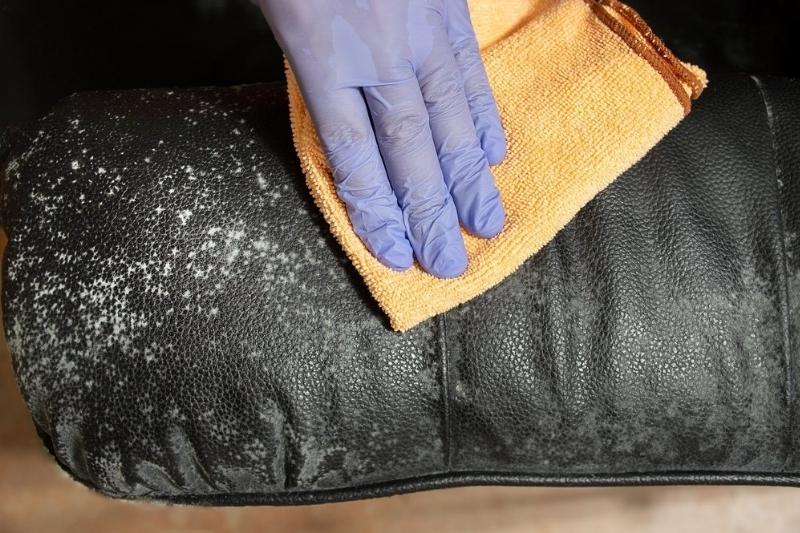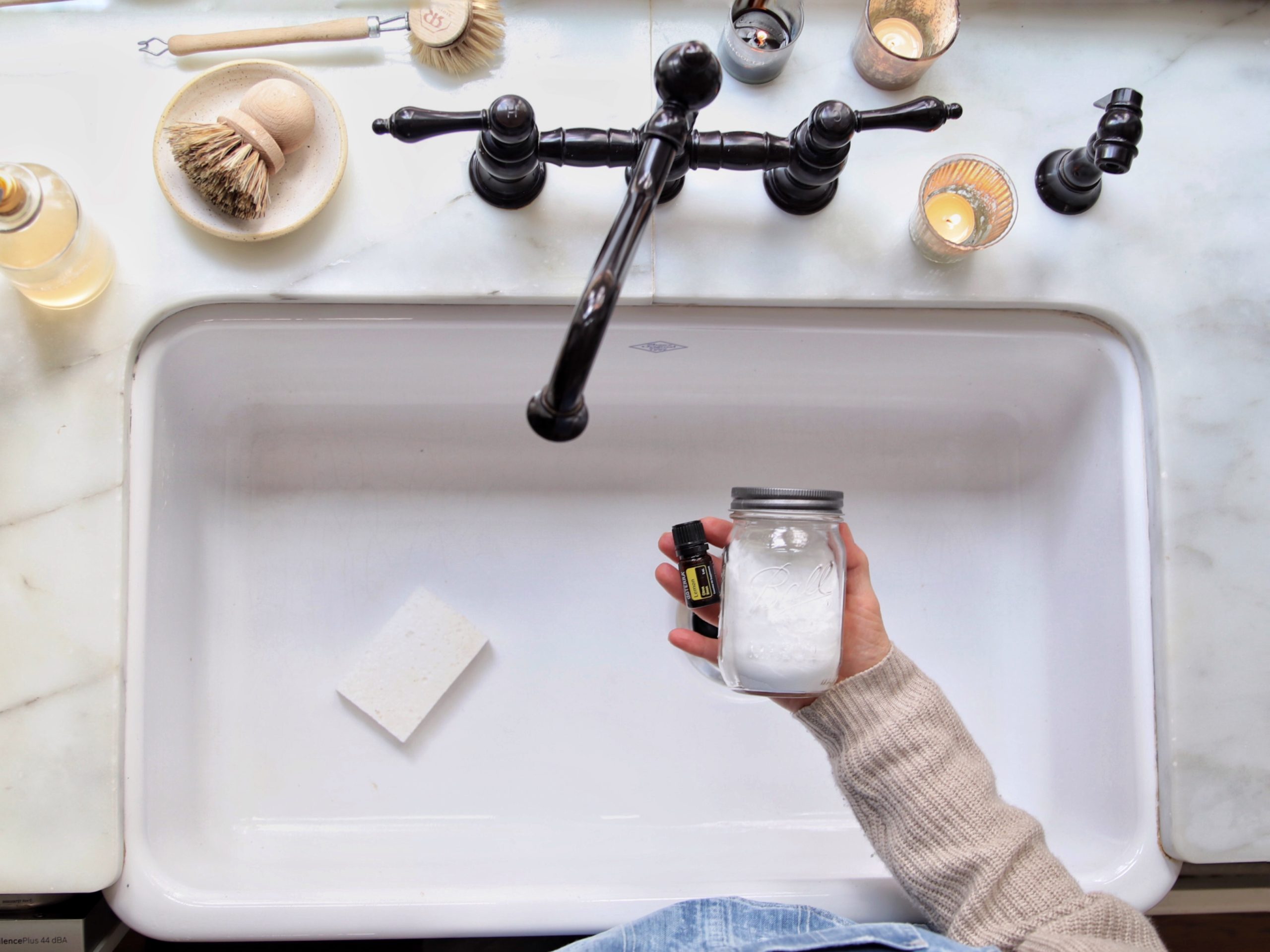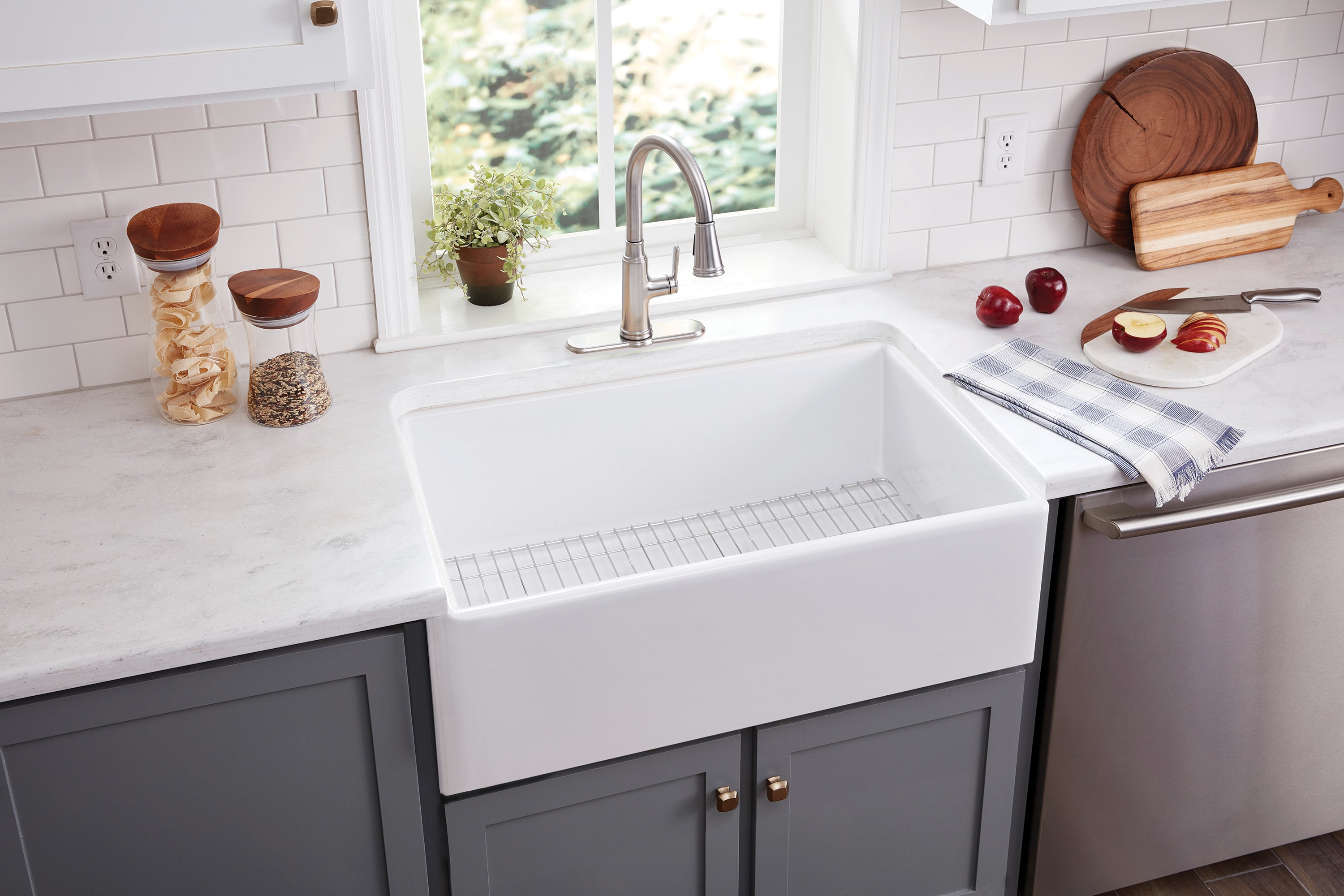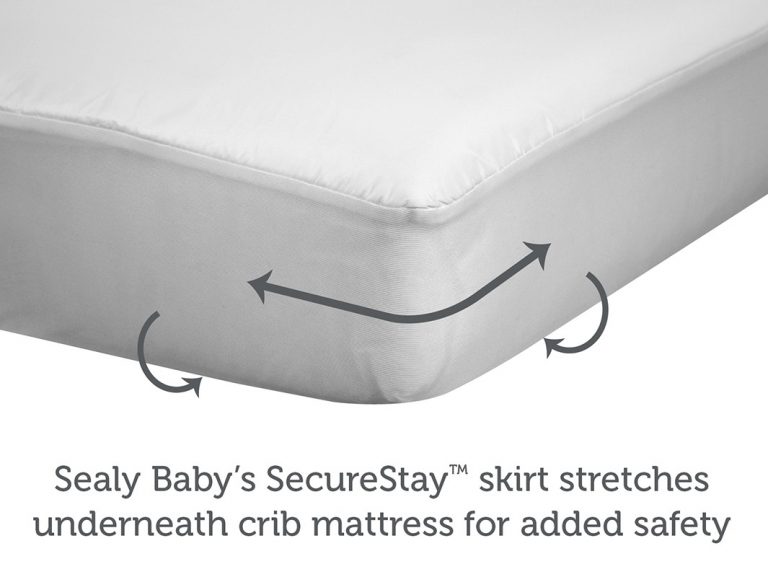How to Remove Mildew from Kitchen Caulk
If you have noticed black or brown spots forming along the edges of your kitchen sink, chances are you have a mildew problem. This pesky fungus thrives in moist and warm environments, making your kitchen sink the perfect breeding ground. But don't worry, with the right techniques and products, you can easily remove mildew from your kitchen sink caulk and keep it mildew-free for good.
How to Clean Mildew from Kitchen Sink Caulk
The first step to getting rid of mildew in your kitchen sink is to thoroughly clean the affected area. Start by mixing equal parts of water and white vinegar in a spray bottle. Spray the solution onto the caulk and let it sit for 15-20 minutes. Then, use a scrub brush or toothbrush to gently scrub the caulk. Rinse with water and repeat if necessary. For tougher stains, you can also use a mixture of baking soda and water to create a paste and scrub with a toothbrush.
Best Caulk for Kitchen Sink Mildew Prevention
Prevention is key when it comes to keeping mildew at bay in your kitchen sink caulk. Choosing the right caulk is crucial in preventing mildew growth. Look for caulk that is specifically labeled as mildew-resistant. Some good options include silicone, acrylic latex, and hybrid caulks. These types of caulk are more resistant to moisture and mold growth.
DIY Kitchen Sink Caulk Mildew Remover
If you prefer to use natural and homemade remedies, there are a few options for removing mildew from your kitchen sink caulk. One popular method is to mix equal parts of lemon juice and baking soda to create a paste. Apply the paste to the affected area and let it sit for 15-20 minutes before scrubbing and rinsing. You can also mix hydrogen peroxide and baking soda to create a paste for tougher stains.
Kitchen Sink Caulk Mildew Prevention Tips
Aside from choosing the right caulk, there are a few other steps you can take to prevent mildew from growing in your kitchen sink caulk. Make sure to regularly dry the sink and caulk after use to prevent moisture buildup. You can also use a dehumidifier in your kitchen to reduce humidity levels. Additionally, avoid using harsh chemicals or abrasive cleaners on your caulk as they can damage the caulk and create more opportunities for mildew to grow.
Removing Mildew Stains from Kitchen Sink Caulk
If you have neglected your kitchen sink caulk and now have stubborn mildew stains, don't worry, there are ways to get rid of them. One option is to use a mildew stain remover specifically designed for caulk. These products contain bleach and other powerful ingredients to effectively remove stains. Alternatively, you can mix equal parts of water and bleach in a spray bottle and spray it onto the caulk. Let it sit for 10-15 minutes before scrubbing and rinsing.
How to Seal Kitchen Sink Caulk to Prevent Mildew
Sealing your kitchen sink caulk is an important step in preventing mildew growth. After thoroughly cleaning and drying the caulk, apply a mildew-resistant caulk sealant on top of the existing caulk. This will create an extra barrier against moisture and mold. Be sure to follow the manufacturer's instructions for best results.
Natural Remedies for Removing Mildew from Kitchen Caulk
If you prefer to use natural and chemical-free methods to remove mildew from your kitchen sink caulk, there are a few options you can try. One method is to mix equal parts of water and tea tree oil in a spray bottle and spray it onto the caulk. Let it sit for 10-15 minutes before scrubbing and rinsing. You can also use a mixture of equal parts of water and apple cider vinegar as a spray. Let it sit for 10-15 minutes before scrubbing and rinsing.
How to Keep Kitchen Sink Caulk Mildew-Free
Now that you have successfully removed mildew from your kitchen sink caulk, it's important to continue taking preventive measures to keep it mildew-free. Make sure to regularly clean and dry the caulk, and use a mildew-resistant caulk sealant as needed. You can also use a mixture of equal parts of water and hydrogen peroxide as a daily spray to prevent mildew growth.
Using Bleach to Remove Mildew from Kitchen Sink Caulk
Bleach is a powerful and effective tool in removing mildew stains from kitchen sink caulk. However, it should be used with caution and only in well-ventilated areas. To use bleach, mix equal parts of water and bleach in a spray bottle and spray it onto the caulk. Let it sit for 10-15 minutes before scrubbing and rinsing. Be sure to wear gloves and protective eyewear while handling bleach.
How to Prevent Mildew in Your Kitchen Sink Caulk

The Importance of Proper Caulking in House Design
 When it comes to designing a functional and visually appealing kitchen,
caulking
is often overlooked. However, proper caulking plays a crucial role in preventing damage and maintaining the overall look of your kitchen.
Kitchen sink caulk mildew
is a common problem that many homeowners face, but it can easily be prevented with the right techniques. In this article, we will discuss the causes of
mildew in kitchen sink caulk
and provide tips on how to prevent it.
When it comes to designing a functional and visually appealing kitchen,
caulking
is often overlooked. However, proper caulking plays a crucial role in preventing damage and maintaining the overall look of your kitchen.
Kitchen sink caulk mildew
is a common problem that many homeowners face, but it can easily be prevented with the right techniques. In this article, we will discuss the causes of
mildew in kitchen sink caulk
and provide tips on how to prevent it.
The Causes of Mildew in Kitchen Sink Caulk
 Mildew is a type of fungus that thrives in warm and moist environments, making your kitchen sink an ideal breeding ground. When water gets trapped in the crevices of your kitchen sink caulk, it creates the perfect conditions for mildew to grow. This can be exacerbated by poor ventilation, lack of sunlight, and food particles that get stuck in the caulk. Over time, the mildew can spread and cause discoloration, unpleasant odors, and even damage to your caulk and surrounding surfaces.
Mildew is a type of fungus that thrives in warm and moist environments, making your kitchen sink an ideal breeding ground. When water gets trapped in the crevices of your kitchen sink caulk, it creates the perfect conditions for mildew to grow. This can be exacerbated by poor ventilation, lack of sunlight, and food particles that get stuck in the caulk. Over time, the mildew can spread and cause discoloration, unpleasant odors, and even damage to your caulk and surrounding surfaces.
Tips for Preventing Mildew in Kitchen Sink Caulk
 1. Regular Cleaning:
The most effective way to prevent mildew in your kitchen sink caulk is to keep it clean. Make sure to wipe down your sink and caulk after each use to remove any excess water or food particles. You can also use a mildew cleaner or a mixture of equal parts vinegar and water to kill any existing mildew.
2. Proper Ventilation:
To prevent the buildup of moisture in your kitchen, ensure that there is proper ventilation. This can be achieved by installing an exhaust fan or opening a window while cooking or using the sink. This will help to keep the air circulating and prevent excess moisture from getting trapped in the caulk.
3. Seal Gaps:
Inspect your kitchen sink caulk regularly for any gaps or cracks. If you notice any, fill them in with a caulk sealant to prevent water from seeping in and causing mildew growth.
4. Use a Silicone Caulk:
When choosing a caulk for your kitchen sink, opt for a silicone-based one. Silicone is resistant to water and mold, making it a more durable and long-lasting option for preventing mildew.
5. Dry Thoroughly:
After cleaning your kitchen sink, make sure to dry it thoroughly. This includes wiping down the caulk and using a dry cloth to remove any excess water from the crevices. This will help to prevent any moisture from lingering and causing mildew growth.
1. Regular Cleaning:
The most effective way to prevent mildew in your kitchen sink caulk is to keep it clean. Make sure to wipe down your sink and caulk after each use to remove any excess water or food particles. You can also use a mildew cleaner or a mixture of equal parts vinegar and water to kill any existing mildew.
2. Proper Ventilation:
To prevent the buildup of moisture in your kitchen, ensure that there is proper ventilation. This can be achieved by installing an exhaust fan or opening a window while cooking or using the sink. This will help to keep the air circulating and prevent excess moisture from getting trapped in the caulk.
3. Seal Gaps:
Inspect your kitchen sink caulk regularly for any gaps or cracks. If you notice any, fill them in with a caulk sealant to prevent water from seeping in and causing mildew growth.
4. Use a Silicone Caulk:
When choosing a caulk for your kitchen sink, opt for a silicone-based one. Silicone is resistant to water and mold, making it a more durable and long-lasting option for preventing mildew.
5. Dry Thoroughly:
After cleaning your kitchen sink, make sure to dry it thoroughly. This includes wiping down the caulk and using a dry cloth to remove any excess water from the crevices. This will help to prevent any moisture from lingering and causing mildew growth.
Final Thoughts
 Mildew in kitchen sink caulk is a common problem that can easily be prevented with proper care and maintenance. By following these tips and regularly inspecting and cleaning your caulk, you can ensure a clean and healthy kitchen environment. Remember to address any mildew growth immediately to prevent it from spreading and causing further damage. With these simple steps, you can keep your kitchen sink caulk looking clean and fresh for years to come.
Mildew in kitchen sink caulk is a common problem that can easily be prevented with proper care and maintenance. By following these tips and regularly inspecting and cleaning your caulk, you can ensure a clean and healthy kitchen environment. Remember to address any mildew growth immediately to prevent it from spreading and causing further damage. With these simple steps, you can keep your kitchen sink caulk looking clean and fresh for years to come.


